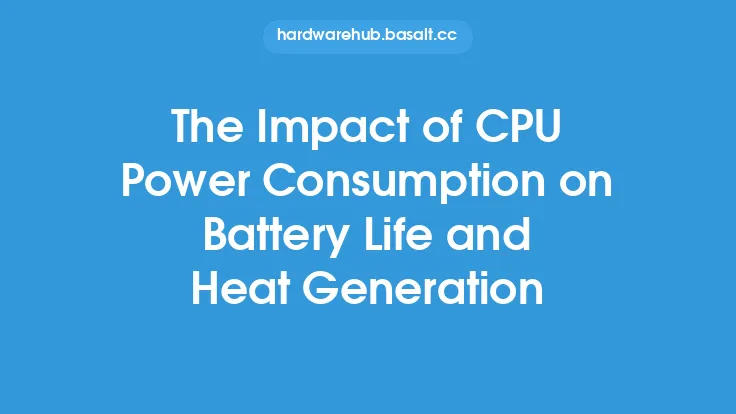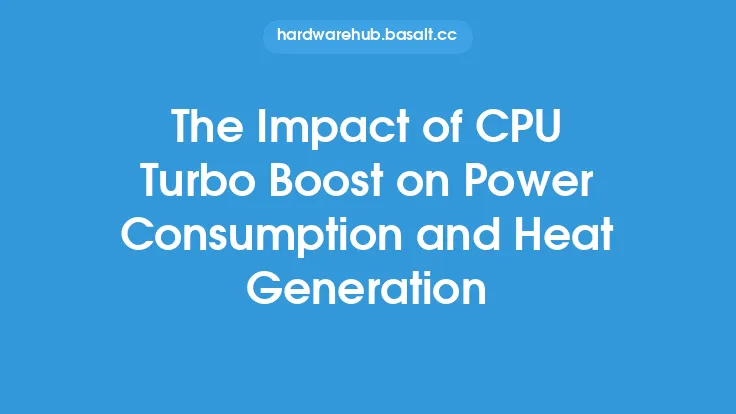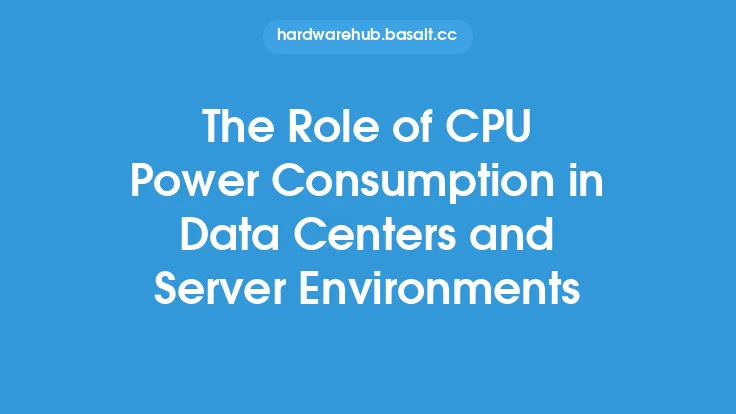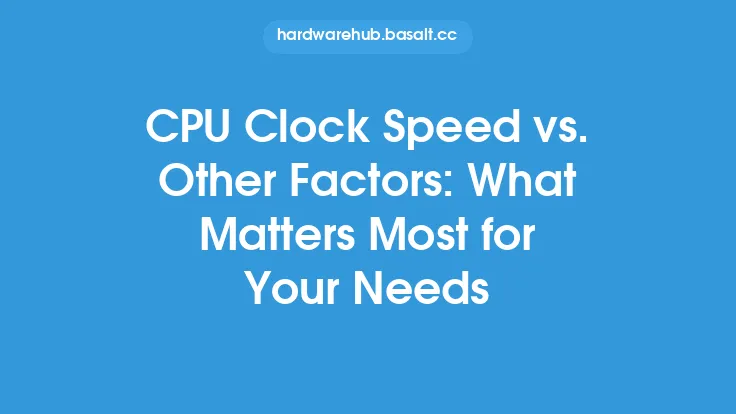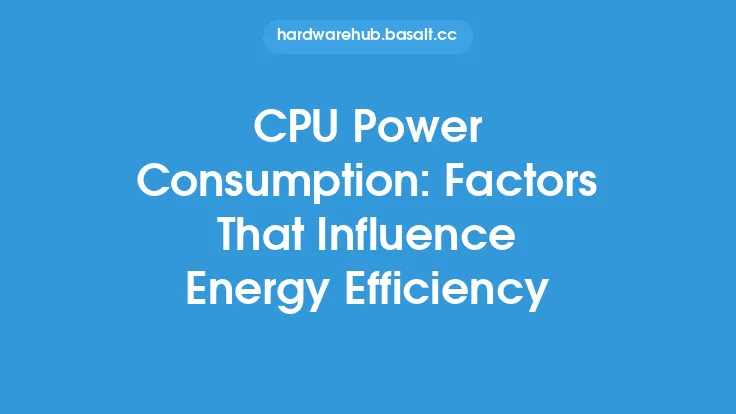When it comes to choosing a CPU, two of the most important factors to consider are power consumption and performance. The ideal CPU would offer high performance while consuming minimal power, but in reality, these two factors are often at odds with each other. As transistors have gotten smaller and clock speeds have increased, CPUs have become more powerful, but they also consume more power. This has led to a delicate balance between power consumption and performance, with different CPUs prioritizing one over the other.
Understanding CPU Architecture
To understand the relationship between power consumption and performance, it's essential to have a basic understanding of CPU architecture. A CPU consists of several key components, including the control unit, arithmetic logic unit (ALU), registers, and cache memory. The control unit retrieves and decodes instructions, while the ALU performs mathematical and logical operations. The registers store data temporarily, and the cache memory provides fast access to frequently used data. As CPUs have evolved, new architectures have been developed to improve performance and reduce power consumption. For example, the introduction of pipelining, out-of-order execution, and multi-threading has enabled CPUs to process more instructions per clock cycle, resulting in improved performance.
Power Consumption and Performance Metrics
To compare the power consumption and performance of different CPUs, several metrics are used. The most common metrics include thermal design power (TDP), which represents the maximum power consumption of a CPU under normal operating conditions, and clock speed, which measures the number of instructions a CPU can execute per second. Other important metrics include instructions per clock (IPC), which measures the number of instructions a CPU can execute per clock cycle, and floating-point operations per second (FLOPS), which measures a CPU's ability to perform floating-point calculations. By considering these metrics, users can evaluate the performance and power consumption of different CPUs and choose the one that best meets their needs.
CPU Power Management Techniques
To reduce power consumption while maintaining performance, CPU manufacturers have developed several power management techniques. One of the most common techniques is dynamic voltage and frequency scaling (DVFS), which adjusts the voltage and clock speed of a CPU based on its workload. When a CPU is idle or under light load, DVFS reduces the voltage and clock speed to conserve power. Another technique is clock gating, which disables the clock signal to idle components, reducing power consumption. Additionally, some CPUs use power gating, which completely powers off idle components to eliminate leakage current. These power management techniques enable CPUs to adapt to changing workloads and reduce power consumption when possible.
CPU Microarchitecture and Power Consumption
The microarchitecture of a CPU also plays a significant role in determining its power consumption and performance. The microarchitecture refers to the design of the CPU's internal components, including the execution units, load/store units, and cache hierarchy. Different microarchitectures prioritize different aspects of performance, such as integer or floating-point execution, and this can impact power consumption. For example, a CPU with a high-performance integer execution unit may consume more power than a CPU with a high-performance floating-point execution unit. Furthermore, the microarchitecture can also affect the CPU's ability to scale to high clock speeds, which can impact power consumption. By understanding the microarchitecture of a CPU, users can better evaluate its power consumption and performance characteristics.
CPU Manufacturing Process and Power Consumption
The manufacturing process used to produce a CPU also has a significant impact on its power consumption and performance. The most common manufacturing processes include 14nm, 10nm, and 7nm, with smaller processes generally resulting in lower power consumption and higher performance. However, as transistors have gotten smaller, they have also become more prone to leakage current, which can increase power consumption. To mitigate this, CPU manufacturers have developed new techniques, such as finFET transistors and gate-last processing, which reduce leakage current and improve performance. By considering the manufacturing process used to produce a CPU, users can better evaluate its power consumption and performance characteristics.
Conclusion
In conclusion, the relationship between CPU power consumption and performance is complex and influenced by several factors, including CPU architecture, power management techniques, microarchitecture, and manufacturing process. By understanding these factors, users can evaluate the power consumption and performance of different CPUs and choose the one that best meets their needs. Whether prioritizing high performance, low power consumption, or a balance between the two, there is a CPU available to meet the requirements of any application, from mobile devices to data centers. As CPU technology continues to evolve, it will be interesting to see how manufacturers balance power consumption and performance in future designs.
